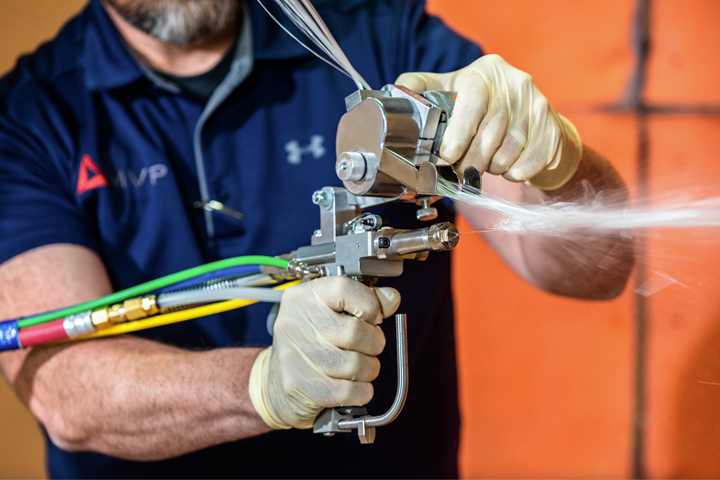Converting from hand layup to open mold spray-up process
In this Digital Demo, Sam Cruz, MVP's Senior Product Manager, talks about how to convert from hand lay-up process to spraying fiberglass and offers an overview of the benefits. (Sponsored)
The demo gives a brief history of MVP focusing on the types of scalable solutions it provides for manufacturers. Cruz explains the importance of selecting the right equipment and processes for your unique production needs. He breaks down the spray up process, step by step, offering tips and tricks. Specific features of MVP’s systems are highlighted throughout the presentation as ways to eliminate common problems in the hand layup method. Cruz also reviews how to accurately monitor your material usage to reduce material waste and produce consistent, high-quality parts.
MVP offers a variety of chop/wet-out systems which can be tailored to your production needs for low, standard, and high-volume outputs. These systems are designed with quality parts to reduce overspray and material waste. The key to efficient FRP production is achieving a uniform laminate, and precise metering will correct many of the most common quality issues, such as porosity and inconsistent thickness. Leverage MVP’s experts for advice and knowledge to formulate the right production solution for you.
For more information on this and other MVP products, visit mvpind.com and follow them online on Facebook, Twitter and LinkedIn.

Related Content
-
Corebon induction heating
This sidebar to CW’s August 2024 feature article reviews this technology for more efficient composites manufacturing and why it aligns with Koridion active core molding.
-
Optimized rib-reinforced hollow composites via printed molds
Addyx topology optimization and water-soluble mandrel enables simultaneous rib and skin layup for one-shot, high-strength, lightweight structures.
-
Plant tour: BeSpline/Addcomp, Sherbrooke, QC, Canada
Composites automation specialist increases access to next-gen technologies, including novel AFP systems and unique 3D parts using adaptive molds.










.jpg;maxWidth=300;quality=90)
